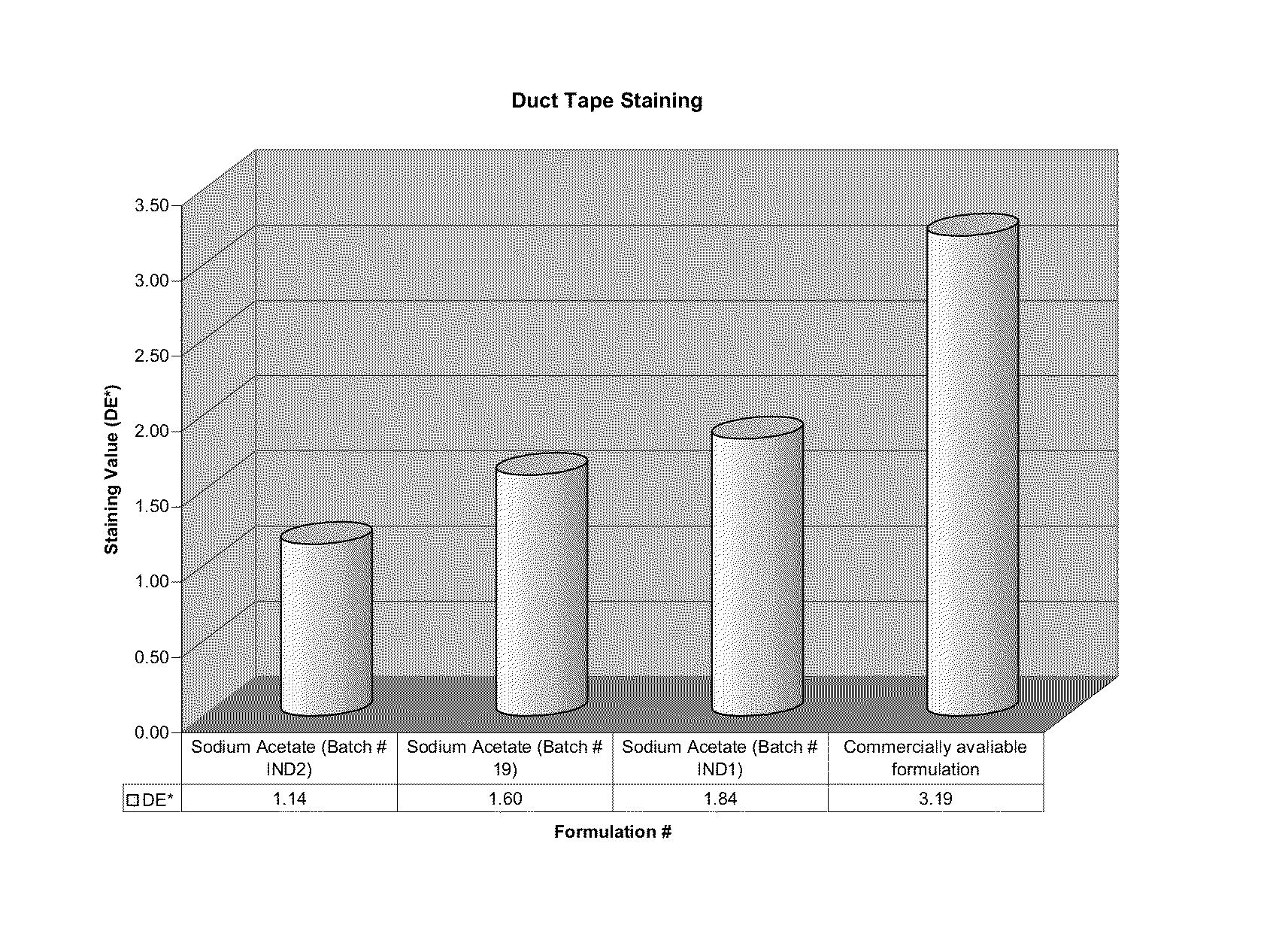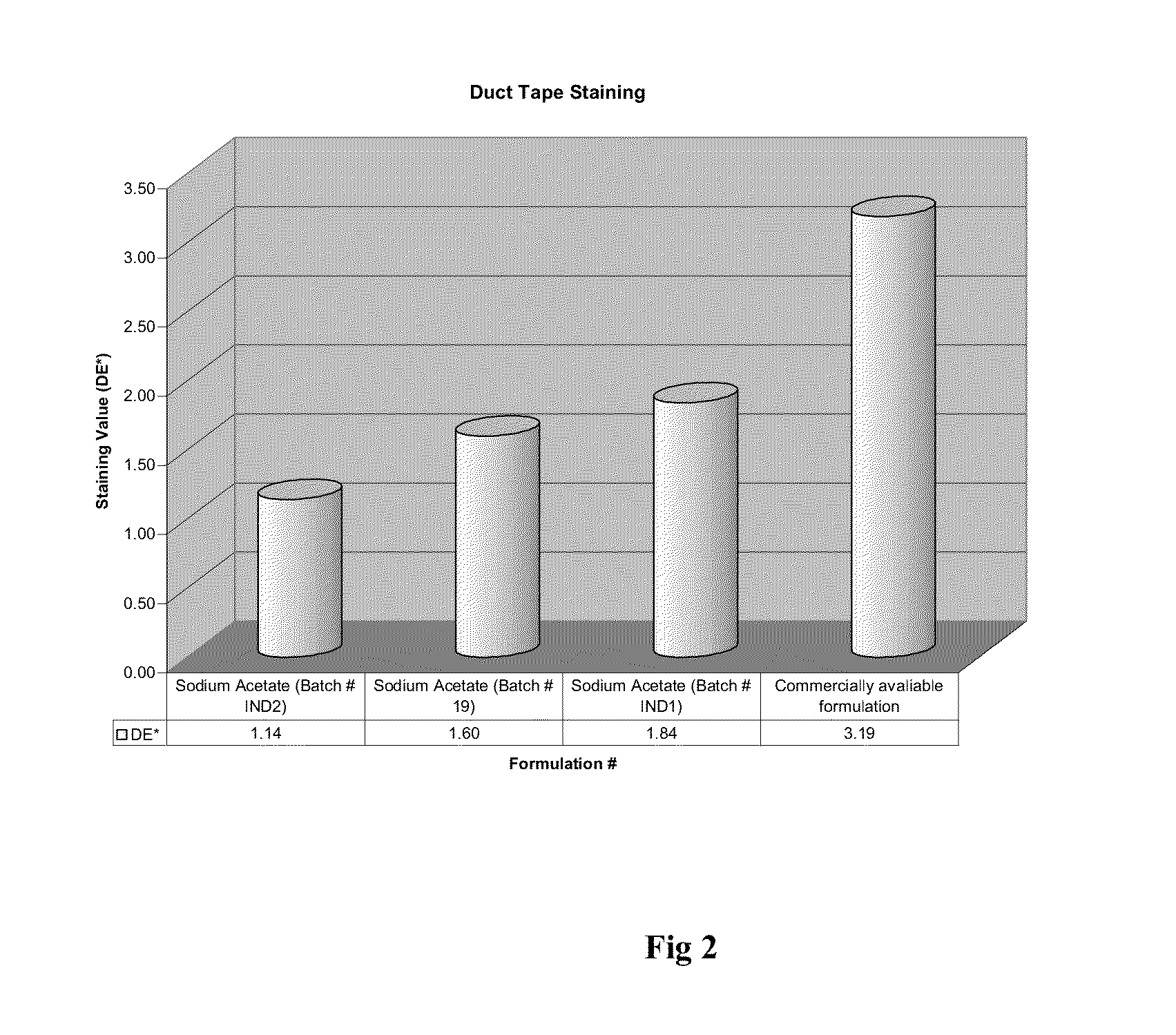Herbicidal formulation
- Summary
- Abstract
- Description
- Claims
- Application Information
AI Technical Summary
Benefits of technology
Problems solved by technology
Method used
Image
Examples
example 1
[0205]An aqueous solution was created by heating tap water to 60° C. while adding sodium lignosulfonate and subsequently sodium acetate, then antifoam while stirring. A sufficient quantity of water was separately preserved for the amine and gum preparations. Meanwhile, organic phase was formed by melting pendimethalin technical to 60° C. and then adding polymethylene polyphenylisocyanante and a herbicidally effective amount of clomazone while stirring. The aqueous and organic phases were maintained at 60° C. throughout reaction. The organic phase was emulsified in the aqueous solution till the desired particle size. DETA (amine) was added to the resultant emulsion. Reaction was allowed to proceed for 1 hour while maintaining heat at 60° C. under stirring. The reaction mixture was allowed to cool to ambient temperature for 15 minutes before neutralizing with HCl. The formulation was neutralized to pH 8.0 in cold conditions or at a pH of 7 in warmer conditions. The neutralized formula...
example 2
[0223]The release rates of the capsule formulations according to the present invention were studied and the results are presented as table 1 appearing hereunder and the accompanying FIG. 1.
FreeactiveCapsule typecontent5 min15 min30 min60 min120 min180 min240 min300 minPendimethalin0.137.0110.7216.7944.978.787.8292.895.9release rate3.5% capsule(third graphfrom top)Pendimethalin0.093.199.317.5446.6575.3386.7292.395.78release rate5.5% capsule(fifth graphfrom top)Pendimethalin0.142.415.266.6810.6228.3244.3656.0163.74release rate3.5% physicaladmixture ofcapsule (sixthgraph fromtop)Clomazone9.131.3989.4100—————release rate3.5% capsule(secondgraph fromtop)Clomazone5.3216.276.0793.78—————release rate5.5% capsule(third graphfrom top)Clomazone49.5763.3698.88100—————release rate5.5% mixtureof capsules(first graph)
example 3
Pendimethalin+Clomazone CS Admixture
[0224]A. Pendimethalin 42% CS Component (Concentrate)
Batch size% w / wPendimethalin tech 42 @9643.750PMPI1.262Water35.638Sodium ligno sulphonate2.500Na-acetate15.000DETA0.650Defoamer, Biocide and Neutralizing acidq.s.Total100.000
[0225]Organic Phase Preparation:
[0226]A required quantity of pendimethalin, which was either pre-melted or powdered, was charged in a vessel. The technical was melted and the temperature of the active material was maintained at 62-67° C. throughout. A required quantity of PMPI was thereafter charged and stirred for homogeneity.
[0227]Organic Phase Preparation:
[0228]A required quantity of distilled water was charged into a vessel. Thereafter, sodium lignosulfonate was charged and stirred for dissolution. Anhydrous sodium acetate was then charged, stirred and maintained at 62-67° C.
[0229]Amine Solution:
[0230]About 3% water (out of the total calculated water quantity) was taken and charged the calculated quantity of amine. The s...
PUM
 Login to View More
Login to View More Abstract
Description
Claims
Application Information
 Login to View More
Login to View More - R&D
- Intellectual Property
- Life Sciences
- Materials
- Tech Scout
- Unparalleled Data Quality
- Higher Quality Content
- 60% Fewer Hallucinations
Browse by: Latest US Patents, China's latest patents, Technical Efficacy Thesaurus, Application Domain, Technology Topic, Popular Technical Reports.
© 2025 PatSnap. All rights reserved.Legal|Privacy policy|Modern Slavery Act Transparency Statement|Sitemap|About US| Contact US: help@patsnap.com



